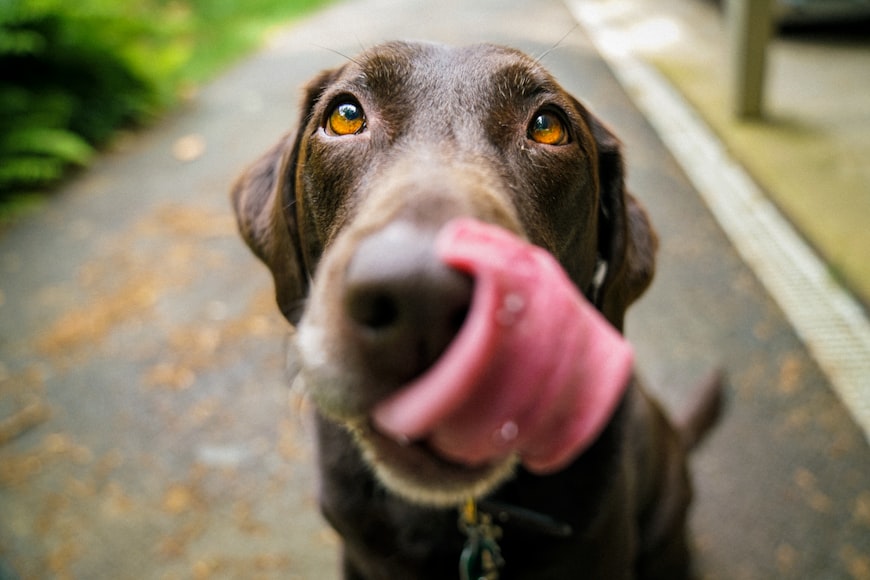Crusty Dog Sores Outline

Introduction
Crusty dog sores, also known as canine pyoderma, are a common skin condition that can affect dogs of all ages and breeds. These sores start as small, red bumps that can develop into raised, itchy, and crusty patches. If left untreated, they can spread and become a serious health issue.
Causes of Crusty Dog Sores
There are a number of factors that can contribute to the development of crusty dog sores, including:
- Bacterial infections: The most common cause of crusty dog sores is a bacterial infection, such as Staphylococcus or Streptococcus. These bacteria can enter the skin through cuts, scrapes, or other wounds.
- Skin allergies: Certain skin allergies can trigger an inflammatory response that leads to crusty sores. These allergies can be caused by food, environmental allergens, or even fleas.
- Parasites: Mange mites and ringworms are parasites that can burrow into the skin and cause inflammation and crusting.
- Immune system disorders: Dogs with weak immune systems are more susceptible to developing crusty dog sores.
Symptoms of Crusty Dog Sores
The symptoms of crusty dog sores can vary depending on the underlying cause. However, some common signs include:
- Red, raised bumps
- Itching and discomfort
- Crusting and scaling
- Loss of hair
- Pus or discharge
- Licking or chewing at the affected area
Diagnosis of Crusty Dog Sores
To diagnose crusty dog sores, your veterinarian will perform a physical exam and take a history of your dog’s symptoms. They may also perform tests to rule out other potential causes, such as skin allergies or parasites.
Treatment of Crusty Dog Sores
The treatment for crusty dog sores depends on the underlying cause. In most cases, your veterinarian will prescribe antibiotics to clear up the bacterial infection. They may also recommend topical medications, such as creams or ointments, to help reduce inflammation and itching.
If your dog has a skin allergy, your veterinarian will likely recommend avoiding the allergen and treating the allergy symptoms. In some cases, they may also prescribe immunotherapy to help desensitize your dog to the allergen.
If your dog has a parasite, your veterinarian will prescribe medication to kill the parasites and prevent further infection.
Prevention of Crusty Dog Sores
There are a number of things you can do to help prevent crusty dog sores, including:
- Keep your dog’s skin clean and healthy by bathing them regularly and brushing their fur.
- Inspect your dog’s skin regularly for any signs of cuts, scrapes, or other wounds.
- Clean and disinfect any wounds immediately to prevent infection.
- Keep your dog up-to-date on vaccinations to protect them from common bacterial and viral infections.
- Treat your dog for any underlying health conditions, such as skin allergies or immune system disorders.
Conclusion
Crusty dog sores are a common skin condition that can affect dogs of all ages and breeds. While they can be unsightly and uncomfortable for your pet, they are typically treatable with proper veterinary care. By following the tips in this article, you can help prevent and treat crusty dog sores and keep your pet’s skin healthy and happy.
Introduction

Introduction
Crusting sores, also known as ulcerative dermatitis or moist dermatitis, are a common skin condition in dogs. These sores appear as red, raised lesions that quickly develop a yellow or brown crust. They can range in size from small pinpoint lesions to large, painful patches. Crusty dog sores can be caused by a variety of factors, and it’s important to determine the underlying cause to provide appropriate treatment.
Causes of Crusty Dog Sores
- Allergies: Both environmental allergies (e.g., pollen, dust) and food allergies can trigger crusty sores in dogs.
- Bacterial infections: Bacterial infections, such as pyoderma, can cause skin infections that form crusty sores.
- Fungal infections: Ringworm (a fungal infection) can also cause circular, crusty sores in dogs.
- Parasites: Scabies and demodex mites can cause intense itching and scratching, which can lead to crusty sores.
- Autoimmune diseases: Certain autoimmune diseases, such as pemphigus foliaceus, cause the body’s immune system to attack the skin, resulting in crusty sores.
- Trauma: Injuries or wounds can also become infected and develop crusty sores.
Symptoms of Crusty Dog Sores
- Crusting: The primary symptom is the presence of crusty, raised sores on the skin.
- Itching: Crusty sores are often itchy and can cause the dog to scratch or nibble at the affected area.
- Redness and inflammation: The skin around the sores is typically red and inflamed.
- Hair loss: Crusty sores can lead to hair loss in the affected area.
- Pain: Large or infected sores can be painful for the dog.
Diagnosis of Crusty Dog Sores
To diagnose crusty dog sores, your veterinarian will perform a physical examination and ask about your dog’s history and symptoms. They may also perform the following tests:
- Skin scraping or culture: This test involves taking a sample of the skin to identify any bacteria, fungi, or parasites.
- Allergy testing: This test helps determine if allergies are contributing to the sores.
- Blood tests: Blood tests can detect underlying health conditions that may be contributing to the sores.
Treatment of Crusty Dog Sores
The treatment for crusty dog sores depends on the underlying cause.
- Allergies: If allergies are the cause, your veterinarian may recommend avoidance measures (e.g., removing allergens from the environment) and prescription antihistamines or corticosteroids.
- Bacterial infections: Antibiotics are prescribed to clear the infection.
- Fungal infections: Antifungal medications are used to treat ringworm and other fungal infections.
- Parasites: Antiparasitic medications are used to eliminate scabies or demodex mites.
- Autoimmune diseases: Treatment for autoimmune diseases involves immunosuppressive medications.
- Trauma: Cleaning and dressing the wound is essential to prevent infection. Antibiotics may also be prescribed.
Home Care for Crusty Dog Sores
In addition to veterinary care, there are some things you can do at home to help manage your dog’s crusty sores:
- Keep the area clean: Gently clean the sores with a warm compress or cotton ball soaked in diluted hydrogen peroxide or chlorhexidine solution.
- Apply a cool compress: A cool compress can help reduce inflammation and soothe itching.
- Prevent scratching: Keep the affected area covered with a bandage or cone to prevent the dog from scratching or licking the sores.
- Provide a comfortable environment: Make sure your dog has a comfortable place to rest and avoid exposing them to stress or triggers that may worsen the sores.
Prevention of Crusty Dog Sores
While not all crusty dog sores can be prevented, there are some measures you can take to reduce the risk of their occurrence:
- Keep your dog up to date on vaccinations: Vaccinations help protect your dog from infectious diseases that can lead to skin infections.
- Control allergies: If your dog has allergies, try to identify and avoid the triggers.
- Use flea and tick prevention: Regular flea and tick control is essential to prevent parasites that can cause skin irritation and infection.
- Provide a healthy diet: A balanced diet can support your dog’s immune system and overall health, which can help prevent skin problems.
Conclusion
Crust
Types of Crusty Dog Sores

Crusty dog sores are a common skin condition that can affect dogs of all ages and breeds. While some crusty sores are harmless, others can be a sign of a more serious underlying health condition.
There are two main types of crusty dog sores:
1. Pyoderma
Pyoderma is a bacterial skin infection that can cause crusty, oozing sores on your dog’s skin. Pyoderma can be caused by a number of different bacteria, including Staphylococcus aureus and Pseudomonas aeruginosa.
Symptoms of pyoderma include:
- Red, crusty sores
- Oozing or discharge from the sores
- Itching
- Hair loss
- Pain
Treatment for pyoderma typically involves antibiotics to clear the infection. In some cases, your veterinarian may also recommend topical treatments, such as medicated shampoos or ointments.
2. Ringworm
Ringworm is a fungal infection that can cause crusty, itchy sores on your dog’s skin. Ringworm is caused by a type of fungus called Microsporum canis.
Symptoms of ringworm include:
- Circular, crusty sores
- Itching
- Hair loss
- Redness
Treatment for ringworm typically involves topical antifungal medications, such as creams or ointments. In some cases, your veterinarian may also recommend oral antifungal medications.
Other Causes of Crusty Dog Sores
In addition to pyoderma and ringworm, there are a number of other conditions that can cause crusty sores on your dog’s skin. These include:
- Allergies
- Parasites
- Autoimmune diseases
- Cancer
If your dog has crusty sores, it’s important to take them to the veterinarian to get a diagnosis. Your veterinarian will be able to determine the cause of the sores and recommend the best course of treatment.
Treatment for Crusty Dog Sores
The treatment for crusty dog sores will depend on the underlying cause. In some cases, treatment may be as simple as applying a topical ointment. In other cases, more aggressive treatment, such as antibiotics or surgery, may be necessary.
Prevention of Crusty Dog Sores
There are a number of things you can do to help prevent crusty dog sores, including:
- Keep your dog’s skin clean and dry.
- Brush your dog’s coat regularly to remove loose hair and dirt.
- Avoid using harsh chemicals on your dog’s skin.
- If your dog has allergies, avoid exposure to the allergens.
- If your dog has parasites, treat them promptly.
- Take your dog to the veterinarian for regular checkups.
By following these tips, you can help keep your dog’s skin healthy and free of crusty sores.
Conclusion
Crusty dog sores are a common skin condition that can affect dogs of all ages and breeds. While some crusty sores are harmless, others can be a sign of a more serious underlying health condition. It’s important to take your dog to the veterinarian to get a diagnosis if they have crusty sores. Your veterinarian will be able to determine the cause of the sores
Causes of Crusty Dog Sores

As a dog pet blogger, you often encounter questions about various health issues that affect our furry companions. One common concern is the appearance of crusty sores on a dog’s skin. Understanding the underlying causes of these sores is crucial for providing proper treatment and ensuring the well-being of your dog.
Causes of Crusty Dog Sores
Crusty sores on dogs can be caused by a variety of factors, including:
1. Bacterial Infection:
Bacterial infections are a common cause of crusty dog sores. Common types of bacteria that cause skin infections include Staphylococcus and Streptococcus. These bacteria can enter the skin through cuts, scratches, or other wounds. Symptoms of a bacterial infection include:
- Crusty or scabby sores
- Redness and swelling
- Pus or discharge
- Pain or discomfort
- Itching
2. Fungal Infection:
Fungal infections, also known as ringworms, are caused by a type of fungus that can live on the skin and hair. These infections are contagious and can spread to other dogs or humans. Symptoms of a fungal infection include:
- Crusty or flaky sores
- Circular lesions
- Hair loss
- Itching
4. Allergies:
Allergies can cause a variety of skin reactions in dogs, including crusty sores. Common allergens include:
- Food
- Pollen
- Dust mites
- Environmental irritants
Symptoms of an allergic reaction may include:
- Crusty or itchy sores
- Redness and swelling
- Excessive scratching
- Sneezing or coughing
5. Parasites:
Certain parasites, such as mites or fleas, can cause skin irritation and lead to the formation of crusty sores. Symptoms of a parasite infestation may include:
- Crusty or itchy sores
- Redness and swelling
- Hair loss
- Excessive scratching
- Weight loss
Diagnosis and Treatment
If your dog develops crusty sores, it’s important to seek veterinary attention promptly to determine the underlying cause. The veterinarian will perform a physical examination, collect a skin scraping or sample for laboratory testing, and possibly conduct blood tests to rule out underlying medical conditions.
Treatment for crusty dog sores will depend on the specific cause and may include:
- Antibiotics for bacterial infections
- Antifungal medication for fungal infections
- Antihistamines for allergies
- Parasite treatment for infestations
- Topical ointments to soothe and protect the sores
Prevention
While not all causes of crusty dog sores are preventable, taking certain precautions can help reduce the risk:
- Keep your dog’s skin clean and dry
- Trim your dog’s nails regularly to prevent scratching
- Treat any open wounds promptly
- Avoid contact with other animals that are known to be infected
- Vaccinate your dog against common infections
Conclusion
Crusty dog sores can be a symptom of various underlying health conditions. Understanding the causes and seeking appropriate veterinary treatment is essential for ensuring your dog’s comfort and well-being. By following proper hygiene measures and taking preventive steps, you can help reduce the risk of crusty skin issues in your furry friend.
Diagnosis of Crusty Dog Sores
Crusty dog sores, also known as ulcerative dermatitis, are a common skin condition that can affect dogs of all ages, breeds, and genders. These sores can be painful and itchy for your dog, and they can also be a sign of an underlying health condition.
Causes of Crusty Dog Sores
There are a number of different causes of crusty dog sores, including:
- Allergies
- Bacterial infections
- Fungal infections
- Parasites
- Immune system disorders
- Cancer
Symptoms of Crusty Dog Sores
The symptoms of crusty dog sores can vary depending on the underlying cause. However, some of the most common symptoms include:
- Red, inflamed skin
- Crusty or scabby sores
- Itching
- Pain
- Hair loss
- Lethargy
- Loss of appetite
Diagnosis of Crusty Dog Sores
If your dog is showing any of the symptoms of crusty dog sores, it is important to take him to the veterinarian for a diagnosis. The veterinarian will perform a physical exam and may also order some tests, such as a skin scraping or a blood test.
Physical Exam
The veterinarian will first perform a physical exam to look for any signs of crusty dog sores. The veterinarian will also check for any other skin conditions, such as allergies or infections.
Skin Scraping
A skin scraping is a procedure in which the veterinarian uses a scalpel to scrape off a small sample of skin from the affected area. The sample is then examined under a microscope to look for any signs of bacteria, fungi, or parasites.
Blood Test
A blood test can be used to check for any underlying health conditions that may be causing the crusty dog sores. The blood test can also be used to rule out any other conditions, such as allergies or cancer.
Treatment of Crusty Dog Sores
The treatment for crusty dog sores will depend on the underlying cause. However, some of the most common treatments include:
- Antibiotics
- Antifungal medications
- Antiparasitic medications
- Allergy medications
- Immune system suppressants
- Surgery
Prevention of Crusty Dog Sores
There are a number of things you can do to help prevent crusty dog sores, including:
- Keep your dog’s skin clean and dry.
- Avoid exposing your dog to allergens.
- Treat any underlying health conditions that may be causing the crusty dog sores.
- Take your dog to the veterinarian for regular checkups.
Conclusion
Crusty dog sores can be a painful and itchy condition for your dog. However, with proper diagnosis and treatment, the majority of dogs can make a full recovery. If your dog is showing any of the symptoms of crusty dog sores, it is important to take him to the veterinarian for a diagnosis.
Treatment of Crusty Dog Sores
Crusty dog sores, also known as pyoderma, are a common skin condition that can affect dogs of all ages and breeds. These sores are caused by a bacterial infection and can be very uncomfortable for your pet. If your dog has crusty sores, it is important to take them to the vet for diagnosis and treatment.
Causes of Crusty Dog Sores
The most common cause of crusty dog sores is a bacterial infection. Bacteria can enter the skin through a break in the skin, such as a cut or scrape. Once the bacteria enters the skin, it can begin to multiply and cause an infection.
Other causes of crusty dog sores include:
- Allergic reactions
- Parasites
- Fungal infections
- Autoimmune diseases
Symptoms of Crusty Dog Sores
The most common symptom of crusty dog sores is the presence of crusty sores on the skin. These sores can be red, brown, or yellow in color. They are often painful and may cause your dog to scratch or lick at the area.
Other symptoms of crusty dog sores include:
- Hair loss
- Swelling
- Drainage
- Redness
- Itching
- Pain
Diagnosis of Crusty Dog Sores
Your veterinarian will diagnose crusty dog sores by examining your dog’s skin and taking a history of their symptoms. Your veterinarian may also recommend a skin biopsy to confirm the diagnosis.
Treatment of Crusty Dog Sores
The treatment of crusty dog sores depends on the underlying cause. If the sores are caused by a bacterial infection, your veterinarian will prescribe antibiotics. If the sores are caused by an allergic reaction, your veterinarian will recommend avoiding the allergen. If the sores are caused by a parasite, your veterinarian will recommend a dewormer.
In addition to medication, your veterinarian may also recommend topical treatments, such as ointments or shampoos. These treatments can help to reduce inflammation and pain.
Prevention of Crusty Dog Sores
The best way to prevent crusty dog sores is to keep your dog’s skin clean and healthy. This means bathing your dog regularly and brushing their coat to remove dirt and debris. You should also avoid exposing your dog to allergens and parasites.
If your dog does develop crusty dog sores, it is important to take them to the vet for diagnosis and treatment. Early treatment can help to prevent the infection from spreading and causing more serious health problems.
Crust Fighting Tips
Here are a few crust fighting tips to help you get rid of your dog’s crusty sores:
- Keep the area clean. Clean the sores with a mild soap and water solution twice a day.
- Apply a topical ointment. Your veterinarian may recommend a topical ointment to help reduce inflammation and pain.
- Give your dog antibiotics. If the sores are caused by a bacterial infection, your veterinarian will prescribe antibiotics.
- Avoid scratching. If your dog is scratching at the sores, try to keep them from doing so. Scratching can make the sores worse.
- See your veterinarian regularly. Take your dog to the vet for regular checkups to make sure the sores are healing properly.
With proper care, most dogs with crusty sores will make a full recovery.
Prevention of Crusty Dog Sores
As a responsible dog pet blogger, you’re committed to providing insightful and practical information to your readers. This article will delve into the causes and prevention of crusty dog sores, offering valuable tips to keep your canine companion’s skin healthy and comfortable.
Crusting: A Red Flag for Skin Health
Crusting on a dog’s skin, often referred to as sores or lesions, is a telltale sign of underlying skin irritation or infection. These sores can manifest in various forms, including red patches, scabs, and oozing wounds. If left untreated, crusty dog sores can become painful, uncomfortable, and lead to more severe skin conditions.
Common Causes of Crusty Dog Sores
Numerous factors can trigger crusty dog sores, including:
- Allergies: Environmental allergens, such as pollen, dust mites, and certain foods, can cause allergic reactions that manifest as skin irritation and sores.
- Skin infections: Bacterial, fungal, or yeast infections can lead to crusty lesions and itching.
- Parasites: Fleas, ticks, and mites can cause itching and irritation, resulting in sores.
- Medical conditions: Underlying medical conditions, such as hypothyroidism and Cushing’s disease, can weaken the immune system and make the skin more susceptible to infections.
Prevention: The Key to Healthy Skin
Fortunately, there are several effective measures you can take to prevent crusty dog sores and ensure your pet’s skin health.
1. Good Hygiene
- Regular bathing: Frequent bathing with a gentle, dog-specific shampoo removes dirt, allergens, and bacteria that can irritate the skin. Avoid overbathing, as this can strip the skin of its natural oils.
- Cleaning the ears: Regularly clean your dog’s ears to prevent wax buildup, which can trap moisture and cause ear infections.
- Cleaning the paws: After walks, especially in damp or dirty areas, wipe your dog’s paws with a damp cloth to remove any dirt or salt.
2. Regular Grooming
- Brushing: Regular brushing removes loose hair, dirt, and dander that could irritate the skin. It also promotes blood circulation, which is important for healthy skin.
- Trimming: Trimming mats and tangles prevents hair from becoming a breeding ground for bacteria and helps keep the skin clean.
- Nail trimming: Long nails can dig into the skin, causing pain and irritation. Regular nail trimming is essential for preventing nail-related sores.
3. Proper Diet
- High-quality food: Feeding your dog a high-quality, well-balanced diet provides the nutrients needed for healthy skin and a strong immune system.
- Avoiding allergens: If your dog has allergies, work with your veterinarian to identify and avoid the allergens that trigger skin irritation.
4. Parasite Control
- Monthly flea and tick prevention: Regular use of flea and tick prevention products is crucial to keep these parasites at bay and prevent the skin irritation they cause.
- Regular deworming: Deworming your dog periodically helps prevent internal parasites that can weaken the immune system and make the skin more susceptible to infections.
5. Healthy Environment
- Clean living space: Keep your dog’s living space clean by regularly vacuuming and washing bedding to prevent the buildup of dirt, dust, and allergens.
- Avoid harsh chemicals: Avoid using harsh chemicals or cleaning products around your dog, as these can irritate the skin.
Conclusion
By implementing these preventive measures, you can significantly reduce the risk of crusty dog sores and ensure your canine companion enjoys healthy, comfortable skin throughout their life. Regular monitoring, prompt veterinary care, and a proactive approach to skin health are essential for maintaining your dog’s overall well-being. Remember, early detection and treatment are key to addressing skin issues effectively and preventing more serious health concerns.
Additional Considerations
Crust formation on dog sores can be a common occurrence, particularly in cases of skin infections or injuries. Understanding the underlying causes of these crusty sores is crucial for effective treatment. Here are two important factors to consider:
Allergies
Allergies are a significant contributor to skin problems in dogs, and they can manifest as crusty sores. Allergies can be triggered by various substances, such as food, environmental allergens (e.g., pollen, dust mites), or contact allergens (e.g., certain fabrics, chemicals).
- Symptoms: Crusty sores, flaky skin, redness, itching, and hair loss.
- Diagnosis: Veterinary allergy testing can identify the specific allergens responsible for the symptoms.
- Treatment: Managing allergies involve avoiding or minimizing exposure to the allergens. This may include dietary changes, allergy medications, or immunotherapy.
Stress
Stress is another common factor that can exacerbate skin conditions in dogs. When dogs experience chronic or acute stress, it can lead to weakened immunity, making them more susceptible to skin problems. Stress can stem from various sources, such as changes in routine, separation anxiety, fear, or boredom.
- Symptoms: Crusty sores, skin infections, excessive licking, pacing, and destructive behavior.
- Diagnosis: Veterinarians may observe the dog’s behavior and gather information from the owner to assess stress levels.
- Treatment: Stress management techniques can include providing a safe and enriching environment, exercise, training, and sometimes medication.
Additional Considerations
In addition to allergies and stress, other factors can contribute to crusty dog sores:
- Bacteria and Yeast Infections: Crusty sores can be a symptom of bacterial or yeast infections on the skin.
- Parasites: Parasites, such as mites or fleas, can cause intense itching and crust formation.
- Immunocompromised Conditions: Dogs with weakened immune systems are more prone to developing skin sores.
- Environmental Factors: Exposure to harsh chemicals, extreme temperatures, or lack of proper grooming can irritate the skin.
Treatment Options
Treatment for crusty dog sores will depend on the underlying cause. In most cases, a combination of approaches is necessary:
- Veterinary Examination: A thorough veterinary exam is essential to diagnose the cause of the sores and determine appropriate treatment.
- Medication: Antibiotics or antifungal medications may be prescribed to treat infections. Antihistamines can help reduce itching.
- Topical Treatment: Topical creams or ointments can soothe the sores and prevent infection.
- Lifestyle Modifications: Reducing stress levels, addressing allergies, and ensuring proper grooming can help prevent future outbreaks.
Prevention
Preventing crusty dog sores is possible by addressing potential risk factors:
- Regular Veterinary Checkups: Early detection and treatment of underlying conditions can help prevent skin problems.
- Allergy Management: Avoid or minimize exposure to known allergens and consider allergy testing.
- Stress Management: Provide plenty of exercise, enrichment, and a stable environment to reduce stress levels.
- Proper Grooming: Regular brushing and bathing remove dirt and parasites, reducing irritation.
- Healthy Diet: Feed a balanced diet to support the immune system and skin health.
Crust formation on dog sores is a common concern that warrants prompt veterinary attention. By understanding the potential causes, such as allergies and stress, and implementing appropriate treatment and prevention measures, you can help maintain your dog’s healthy skin.
























